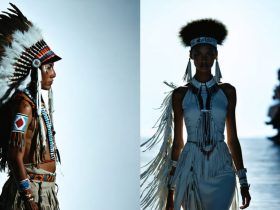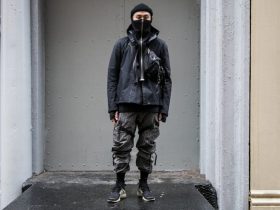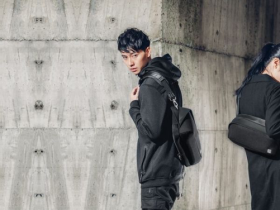In a world where first impressions are often made in the blink of an eye, fashion serves as a powerful tool for self-expression and interaction. But beyond mere aesthetics, our clothing choices are deeply intertwined with cultural narratives that transcend time and geography. From the vibrant patterns of traditional garments to the sleek lines of contemporary design, every piece of clothing tells a story—one that reflects the values, beliefs, and histories of the societies that create and embrace them.
In this article, we will explore how cultural influences shape not only what we wear but also how we perceive ourselves and others. Join us on this journey as we unravel the vibrant tapestry of fashion, examining the intricate ways in which our identities are woven into the fabric of our attire.Whether you’re a fashion enthusiast or simply curious about the forces that shape our wardrobes, there’s something here for everyone to discover.
Understanding Cultural Narratives in Fashion

fashion transcends mere fabric and stitching; it embodies the intricate tapestry of cultural narratives that inform our choices and identities. every piece of clothing tells a story, whether it’s a vibrant traditional garment representing heritage or a contemporary outfit echoing the values of modern society. the influences of history, geography, social norms, and economic contexts intertwine to shape what we wear, transforming fashion into a powerful medium of expression that conveys messages about belonging and individuality. Some critical elements that contribute to these narratives include:
- Past Significance: Garments often reflect historical events, movements, or significant figures.
- Regional Influences: Local customs and resources shape unique fashion trends that resonate with a community’s cultural identity.
- artistic Expression: Designers draw from cultural references to create clothing that speaks to shared experiences and stories.
- Subcultures: Various groups within society adopt specific styles,making fashion a vehicle for individuality and rebellion.
Understanding these narratives not only enriches our gratitude of fashion but also highlights the interconnectedness of cultures.The global exchange of ideas has led to a vibrant fusion of styles,inspiring countless designers to reinterpret traditional motifs in innovative ways.This cross-pollination of fashion can be illustrated through the following examples:
| style | Cultural Influence | Modern Interpretation |
|---|---|---|
| Kimono | Japanese | Streetwear collaborations featuring kimono patterns |
| Huipil | mexican | Contemporary dresses with traditional embroidery |
| Dashiki | West African | Casual wear with modern cuts and vibrant colors |
the Role of History and Tradition in Clothing Choices
Clothing choices are often deeply intertwined with history and tradition, acting as a canvas that reflects the cultural narratives of societies across the globe. These fabrics and styles serve as a visual language, encapsulating the stories of generations and the significance of particular garments.As an example, traditional garments like the kimono in Japan or the sari in India are not merely clothing; they represent centuries of cultural practices, beliefs, and aesthetics that have evolved over time. By wearing these pieces, individuals participate in a dialog with their heritage, celebrating their identity while also maintaining a connection to their ancestors.
Moreover, the influence of historical events can be seen in modern fashion choices, as designers draw inspiration from the past to create contemporary pieces that resonate with today’s consumers. Elements that once symbolized social class, religious beliefs, or political movements frequently enough resurface in fashion runways, reviving old narratives in new ways.To illustrate this connection, consider the following examples:
| Clothing Item | Historical Significance |
|---|---|
| Denim Jeans | Originally worn by miners, now a symbol of casual culture. |
| Peasant Blouses | Reflect rural traditions and folk art, now celebrated in bohemian style. |
| Leather Jackets | Associated with rebellion, originally worn by WWII pilots, now a fashion staple. |
Sustainable Fashion: Weaving Stories of Ethical practices
At the core of the sustainable fashion movement lies a tapestry of cultural narratives that inform our wardrobe choices. Each piece of clothing tells a story,reflecting the rich traditions and values of the communities from which they originate. from handwoven textiles to naturally dyed fabrics, the methods employed by artisans around the world are steeped in historical significance. By embracing ethical practices, we not only support the livelihoods of these craftspeople but also preserve the cultural heritage they represent. This approach fosters a deeper connection between consumers and the garments they wear, encouraging a mindful selection process that prioritizes sustainability.
Moreover, the impact of sustainable fashion extends beyond individual choices; it challenges the entire fashion industry to rethink its practices. As brands adopt ethical sourcing and eco-amiable materials, they contribute to a movement that champions transparency and accountability. This shift in perspective helps to redefine beauty standards and promotes inclusivity, as diverse stories and styles come to the forefront. To illustrate the positive shifts within the industry, here’s a table showcasing some notable brands that embody these principles:
| Brand | Ethical Practice | Cultural Impact |
|---|---|---|
| Patagonia | Recycled materials | Environmental Advocacy |
| Everlane | Transparent Pricing | Fair Wages |
| Reformation | Sustainable Fabrics | Women empowerment |
Expressing Identity Through Style: Personal Narratives in Fashion
Fashion serves as a canvas upon which individuals paint their personal narratives, influenced by culture, history, and emotion. Each piece we choose to wear tells a story of its own, a tapestry woven with threads of identity, heritage, and aspiration. For many, clothing is not merely functional but a powerful medium that expresses who we are and where we come from. Whether it’s the vibrant patterns of indigenous textiles or the sleek lines of modern minimalism, our style choices reflect our backgrounds and beliefs, acting as a bridge that connects us to our roots while enabling us to showcase our unique personalities.
Consider the array of influences that shape our sartorial decisions. Cultural heritage plays a significant role, often represented through:
- Traditional garments: Items that carry ancestral significance, like kimonos or saris, can evoke pride and remembrance.
- Fashion trends: Current styles frequently enough reflect societal movements, emphasizing the importance of self-expression.
- Personal experiences: Memories attached to particular outfits can imbue them with nostalgia and meaning.
A engaging illustration of this concept can be seen in the following table, showcasing how different cultures influence modern fashion trends:
| Cultural Influence | Fashion Element | Modern Interpretation |
|---|---|---|
| Japanese | Kimono | Layering with contemporary cuts |
| Indian | Sari | Fusion wear with Western styles |
| African | Wax prints | Streetwear and high fashion |
In retrospect
As we wrap up our exploration of fashion as a storytelling medium, it’s clear that what we wear is far more than a matter of personal style; it’s a vibrant tapestry woven from cultural narratives, historical context, and individual expression. Each garment we don carries the weight of tradition, innovation, and sometimes even rebellion, reflecting the diverse stories that shape our identities.Understanding the connections between fashion and culture enriches our appreciation for the artistry behind each piece and encourages us to wear our stories with pride.
So, the next time you choose an outfit, take a moment to consider the journey it represents. From the fabric that embraces your skin to the trends that stir your spirit, fashion is a powerful language that speaks volumes about who we are and where we come from. Embrace it, share it, and let your wardrobe tell your unique story, as vibrant and diverse as the world we live in.Thank you for joining us on this sartorial journey—here’s to celebrating the narratives that shape our fashion choices!










Leave a Reply